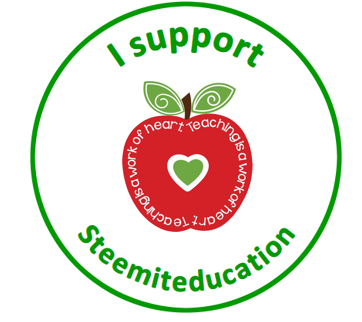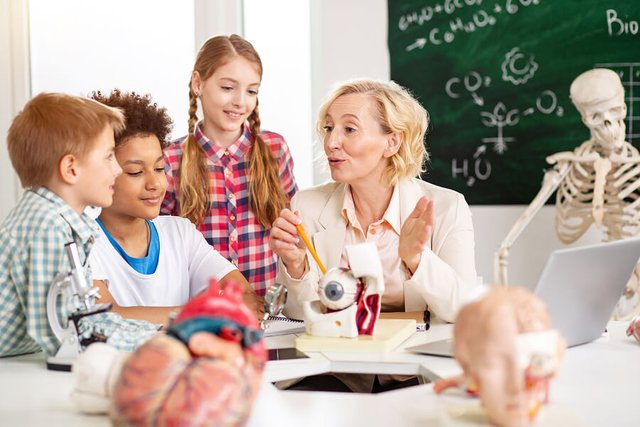Teaching Anatomy to children: how your body works
If you are looking for ideas to teach your children how is your anatomy and the functions of your body, you can not stop reading the article that we bring you below. With these proposals, the little ones will understand perfectly everything that happens in their body.
The teaching of anatomy for children can be complex if we consider the varied number of organs we possess and their various functions. Children, learning about their body awakens a huge curiosity; we must be prepared to respond in a pedagogical way to all their questions.
As with any subject, imparting information to children should be done gradually; Their capacities to process and rationalize the explanation that we are giving them must be taken into account .
Based on this reflection, we will present the data on the anatomical and functional changes in the organism depending on the age of the children. In addition, the pedagogical resources most used in the teaching of anatomy are included.
The anatomy of children differs from that of adults, because up to nine or ten years several of their organs are in a period of immaturity. So, they are far from what will be their complete formation as men or women.
Therefore, if we are to teach our children about anatomy, we must know the basic distinctions between their bodies and ours. We list them below:
Anatomical characteristics of children according to their stage of growth
In general, in the introductory studies on anatomy, a classification is made between newborn infants, infants, pre-school children and children of school age up to ten years of age.
Anatomy of newborn children
Children who fall into this classification have a life range of 1 day to 28 days. The anatomy of newborns is distinguished by the immaturity of their organs , its average weight ranges between 2.5 and 3.5 kilograms, his skull measures about 34 centimeters and his extremities have a smaller and shorter appearance with respect to his torso and his head.
The anatomy of newborns differs greatly from that of adults.
On his face, we can observe that his sclera-white part of the eye-is bluish; his lips are thick and the upper lip protrudes for suction , he does not have teeth and can present absence of hairs such as eyebrows or eyelashes.
Also, his neck is quite short, more than at other ages, The same goes for your extremities. Its abdomen is shaped like a balloon and its ribs are placed horizontally.
Anatomy of infants
The anatomy of infants is related to that of newborn babies, but is distinguished in that the nervous system begins to mature and are able to perform movements at will, although in a rough or wandering.
The infant sleeps less hours a day compared to the newborn; its lowest average is 14 hours. they can differentiate flavor changes in food and smell from their mother. After three months, the child can breathe through the mouth, but his larynx, trachea and bronchi are small.
Anatomy of preschool children
It is distinguished in these ages that the cerebral cortex of the child manages to develop. In addition, the ribs begin to change their shape from horizontal to oblique, their breathing begins to be thoracic and ceases to be abdominal.
On the other hand, his heart begins to be placed in the same position as that of adults, unlike the heart of infants, which is towards the center.
"The anatomy of newborns differs from that of adults; it is distinguished by the immaturity of its organs "
Anatomy of children of school age up to ten years
In this stage, children begin to resemble their bodies to adult forms and functions. This can be observed in the following aspects:
Position of the stomach
Development of your nervous system.
Amount of hours that sleep -10 or 12 hours-.
The intrathoracic organs are located 50% in their final position.
Its respiratory rate decreases to 20 breaths per minute.
The anatomy for children can also use books to transmit knowledge.
Resources to teach anatomy for children
There are several pedagogical means that have been very useful to teach anatomy for children. The most outstanding are:
Books with funny illustrations, in this line, the Baby encyclopedia, The human body, My first anatomy book; and Superpreguntones para sins, Human Body version.
Anatomical games: they are very fun and children can disarm the pieces while it goes unveiling the inside of our body.
Documentaries: educational channels Discovery and Nat Geo have educational series in which narrate, as a documentary, the process of formation of fetuses in the womb and physical changes in the different stages of growth.
Applications for mobile or tablet: there are several fun applications in which children can play to be doctors while learning about human anatomy. They can be located and downloaded for Apple and Android.
With this little guide on the anatomy for children, we are sure that they can clarify some doubts. Of course, all are a complement to the educational proposals to teach children about the human body.


Hello! I find your post valuable for the wafrica community! Thanks for the great post! @wafrica is now following you! ALWAYs follow @wafrica and use the wafrica tag!
Widow....found this very useful.